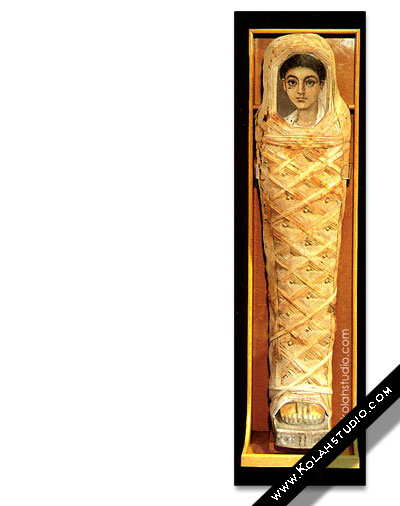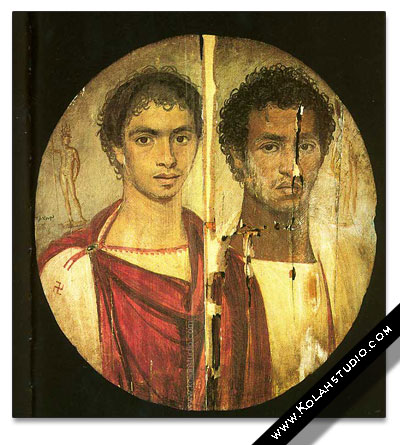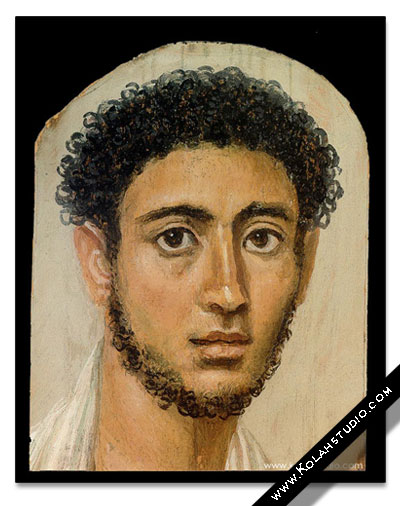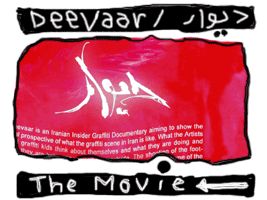Fayum Mummy Portraits


Happy He who drew you , and happy this wax that let itself be vanquished by your beauty .If only I could be transformed into a maggot or a crawling worm ,that I might devour that wood
The Greek Anthology , XII ,90
.
Fayum mummy portraits is the name given to a large number of paintings from the first to third century. These are encaustic paintings , made with hot, pigmented wax on wooden panels, which were inserted into the mummies of the deceased.

Egypt (Arabic: مصر, Romanized Mişr or Maşr, in Egyptian dialect) is the most populous in
North East Africa
Most of the portraits depict the deceased at a relatively young age, and many show children. According to Walker (2000), “CAT scans of all the complete mummies represented [in Walker (2000)] reveal a correspondence of age and, in suitable cases, sex between mummy and image.” Walker concludes that the age distribution reflects the low life expectancy at the time. It has also been proposed that the mummy paintings were originally wall paintings which were copied or used in their original form as panels. Idealization of the deceased may also have been common.

Fayum is located in some sixty kilometres (forty miles) south-west of Cairo that in ancient times included cities near to Arsinoe and Philadelphia . In the late nineteenth century, a time so rich in discoveries, archaeologists and adventurers alike were suddenly fired with curiosity, eager to answer the challenge of this spellbinding mystery.
Yet it was nearly three centuries earlier that Pietro delta Valle, a young Roman aristocrat and learned traveller, had experienced the most beautiful of these encounters. As he was setting up his tent amid the tombs of te necropolis of Saqqara , he was approached by a local peasant who offered him one mummy, followed soon afterwards by another. found their way a century later into the archaeological collections of what is now the Dresden Museum .
Theodor Ritter von Graf, by profession a Viennese dealer, went so far as to organize a vast traveling exhibition in 1889 that toured around europ , from France to London via Munich and Brussels .

Encaustic painting, also called “hot wax painting”, involves using heated beeswax to which colored pigments are added. The liquid/paste is then applied to a surface – usually prepared wood, though also canvas and other materials. Metal tools are used to shape the paint before it cools; also special brushes. This technique was notably used in the Fayum mummy portraits from Eygpt around A.D. 100-300, as well as in many works of the 20th century American artist, Jasper Johns.
Resources :
Internet resources: | http://fayum.arts.kuleuven.ac.be
Books : Fayum Portraits | By Berenice Geoffroy-Schneiter Thames and Hudson Press 1998 paris . ISBN 0-500-23763-8

